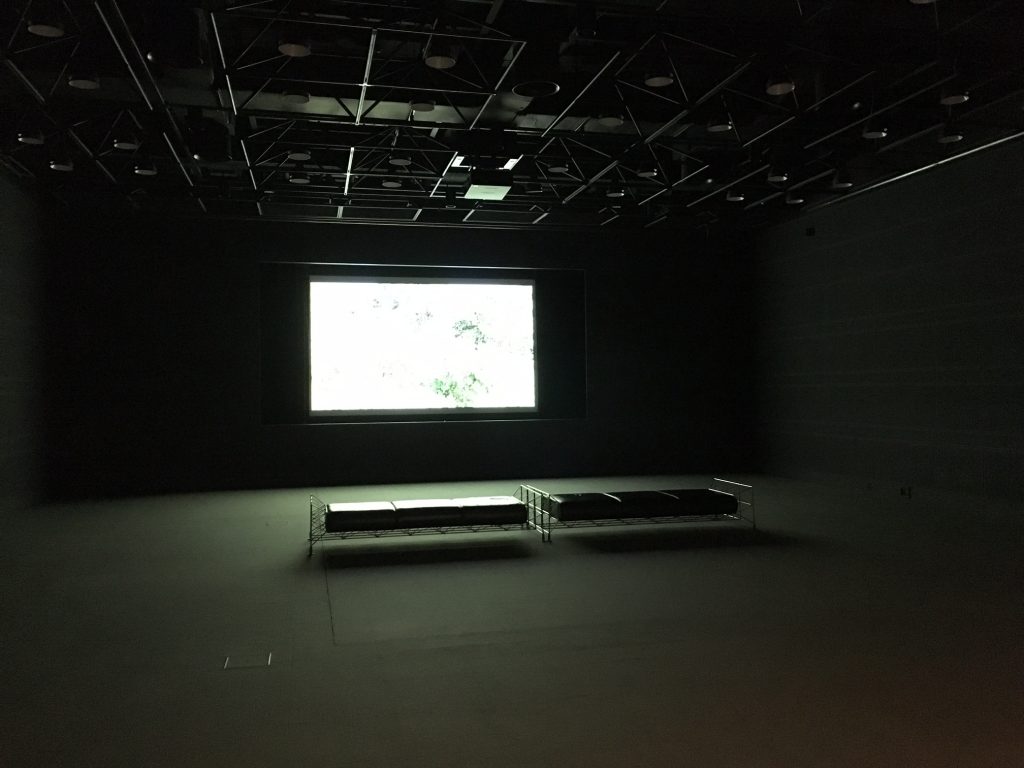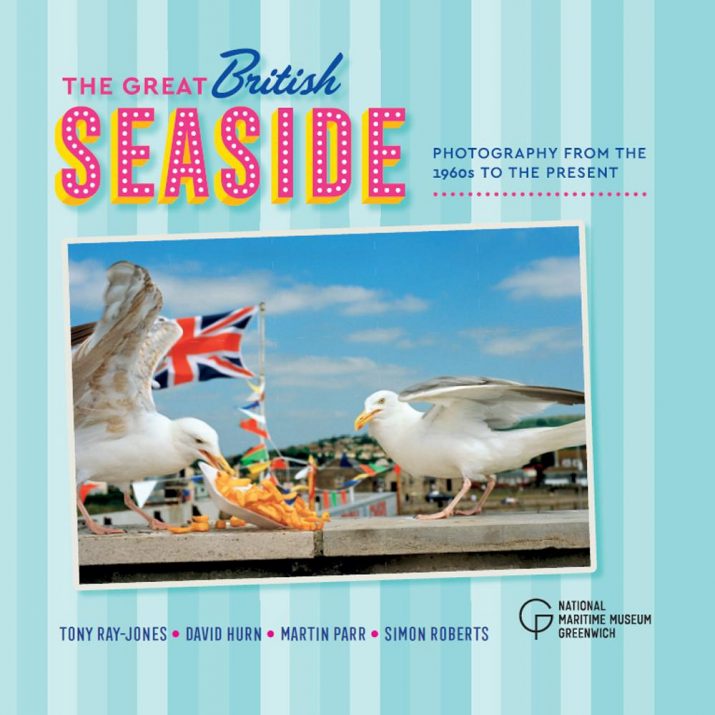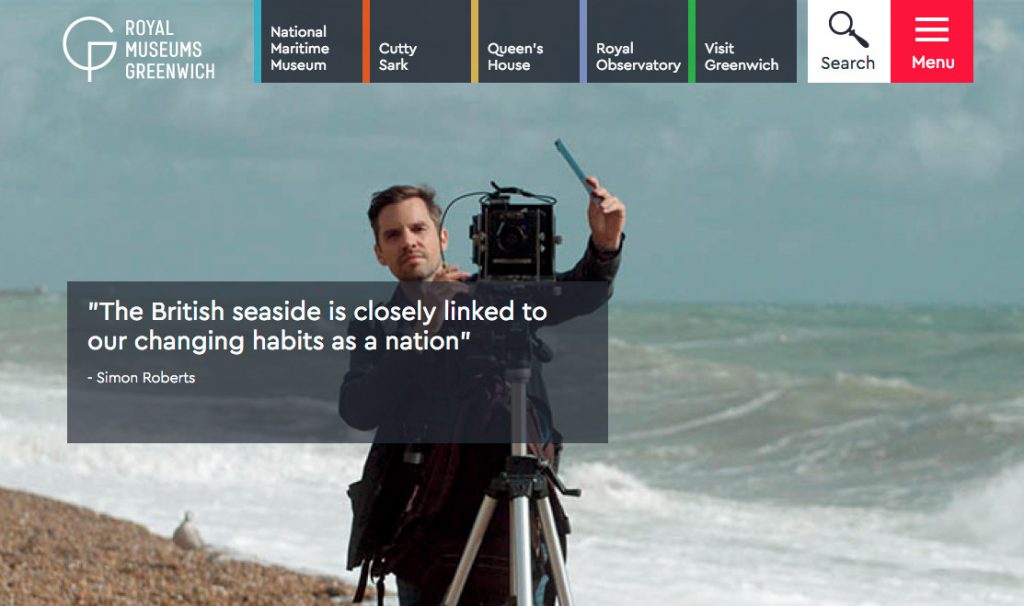The exhibition is curated by Marianne Kapfer, Berlin.
Bringing together contemporary and historical representations of Blackpool’s piers, Neither Land nor Sea, documents the enduring appeal of the architecture, atmosphere and activity of these Seaside structures.
Alongside paintings and photographic works from the Grundy’s Collection, a series of images by 19th Century, Blackpool-based photographer, Albert Eden, will also be exhibited. Printed from glass slides; part of Blackpool Council’s Heritage Collections, these images will be shown alongside a selection of work from photographers based in, or with links to Blackpool and the Fylde Coast, for whom Blackpool’s piers are a frequent subject.
Featuring works by; Albert Eden, H. Burrell, Joseph Conrad Morley, Thomas Huson, Simon Roberts, Linzi Cason, Karl Child, Yannick Dixon, Claire Griffiths, Dawn Mander, Jill Reidy, Richard Jon and Kate Yates.
You can read a review of the exhibition in Corridor 8 HERE.

Image: H. Burrell Pavilion Fire, North Pier 1921.
EVENTS
Saturday 14 April, 3pm – 5pm: Neither Land nor Sea, Artists’ Talk
Saturday 9 June, (time tbc): Blackpool North Pier, Tour and Talk
Saturday 16 June, 3pm – 5pm: The Social History of Blackpool’s Piers, an Illustrated Talk by Tony Sharkey
All events are FREE and will take place at the Grundy apart from the Blackpool North Pier, Tour and Talk. Please contact the Grundy or see our website for further information about any of these events
Image: The end of the world (1955) from New Vedute (2015-2016)
My New Vedute series are on show at Galerie Heinzer Reszler Lausanne.
Please join us for the private view on Tuesday 15 May.
As part of the exhibition The Great British Seaside at the National Maritime Museum, I will be in conversation with fellow exhibitors, Martin Parr and David Hurn to discuss the role of photography in documenting British culture and their approaches to capturing the seaside.
Viewing of the exhibition followed by a panel discussion and Q&A led by artist and writer Sunil Shah.
Book tickets HERE>
As part of their video art program, the Hiroshima City Museum of Contemporary Art are screening my two video pieces: Sight Sacralization: (Re)Framing Switzerland Part 1, Winter and Part 2, Summer.
The screening will be held from 1st May 2018 to 1st July 2018.
Read more here: https://www.hiroshima-moca.jp/en/exhibition/cat/video/

Image: Video still from ‘(Re)framing Switzerland Part 1 – Winter, 2016’
Public Performance, assembles photographs and video work from two of my series – The Last Moment and Sight Sacralization: (Re)framing Switzerland. Both works explore our society of instantaneity and the use of photography in relation to ideas of landscape identity and modern culture.
Alongside my work Zeitgeist will also be showing Jered Sprecher.
Dates:
Opening May 5, 6-8pm
Reception June 2, 6-8pm
Bben Drauf – On Top: Four photographic perspectives with Bernd & Hilla Becher, Matthias Koch, Simon Roberts and Peter Hebeisen at Photobastei in Zurich.
Runs from 19 April 2018 to 03. June 2018.
“On top” stands for an elevated position as a working method and as a photographic perspective.The exhibition presents four such positions – all landscape shots from the point of view of an elevated viewpoint: icons of industrial photography by Bernd & Hilla Becher, pictures of the Atlantic Wall of her master student Matthias Koch, “European battlefields” by Swiss Peter Hebeisen and “Sight Sacralization: (Re) framing Switzerland” by renowned English photographer Simon Roberts. In addition, the artists use photography as a medium of documentation and reflection. They show places that are historical or meaningful.
Facebook: https://www.facebook.com/events/156905301668494/
Photo: Detail from Brighton Beach, 2007
Opening in March 2018, The Great British Seaside: Photography from the 1960s to the present is a major new exhibition exploring Britain’s relationship with the seaside through the lenses of the nation’s best loved photographers, Martin Parr, Tony Ray-Jones, David Hurn and Simon Roberts.
Many of us in Britain look back with fondness on memories of paddles in the sea and picnics on the promenade. Yet the seaside can also be a place of faded glory and acute deprivation. These tensions have provided fertile ground for documentary photographers who have sought to capture the ambiguities and eccentricities that define a day at the British seaside.
Read an article in The British Journal of Photography about the show, Celebrating the seaside at the National Maritime Museum.
Discover the lives and careers of Martin Parr, Tony Ray-Jones, David Hurn, and Simon Roberts and hear in their own words what draws them to the seaside, Photographers at the seaside.

Buy the accompanying book here, The Great British Seaside: Photography from the 1960s to the Present. Published to accompany the 2018 National Maritime Museum exhibition The Great British Seaside: Photography from the 1960s to the Present, this book showcases over 100 photographs, including material from each of the photographers’ archival collections, newly commissioned works, and never-before-seen images.
Photograph: Southampton Fragment #1, 2018 © Simon Roberts
As part of Southampton Science and Engineering Festival I will be participating in the panel discussion:
The City That Lost Its Sea:
Reconnecting Southampton With Its Watery Past, Present, And Future.
Thursday, March 15th 2018 @ Doors open at 18:30 (for a 19:00 start). Finishing at 20:30.
Southampton owes its existence to the sea, but how many of its citizens even see the water, from day to day? The port’s development has seen its settlement successively recede from the sea that is its raison d’etre. In its economic success, the city has been disconnected by its own expansion from the element that sustains it. In the process, its stories have been concealed: narratives of identity and migration, of resource and exploitation. What effect has this had on the city’s culture, its human and natural history? Four panellists with vividly different experiences of this story come together, from the arts and the sciences, to discuss how Southampton lost its sea, and how it might be regained. Panellists: Professor Rachel Mills, Professor Philip Hoare, Professor Meric Srokosz and Simon Roberts.
Doors open at 18:30 (for a 19:00 start). Finishing at 20:30.
John Hansard Gallery, Studio 144, Guildhall Square, Southampton, SO14 7DU
Book here: http://www.sotsef.co.uk/festival_events/?zone=festival_events
Wednesday 18th April 2018
David Hurn and Simon Roberts, two leading British photographers from two different generations, will be in conversation at The Photographers’ Gallery covering a wide range of topics such as education, forging a career in photography, authoring major bodies of work, and their different approaches on documenting their home countries of Wales and England respectively.
Hurn and Roberts exhibit together at the National Maritime Museum in The Great British Seaside alongside photographs by Tony Ray-Jones and Martin Parr, running 23 March to 30 September 2018.
